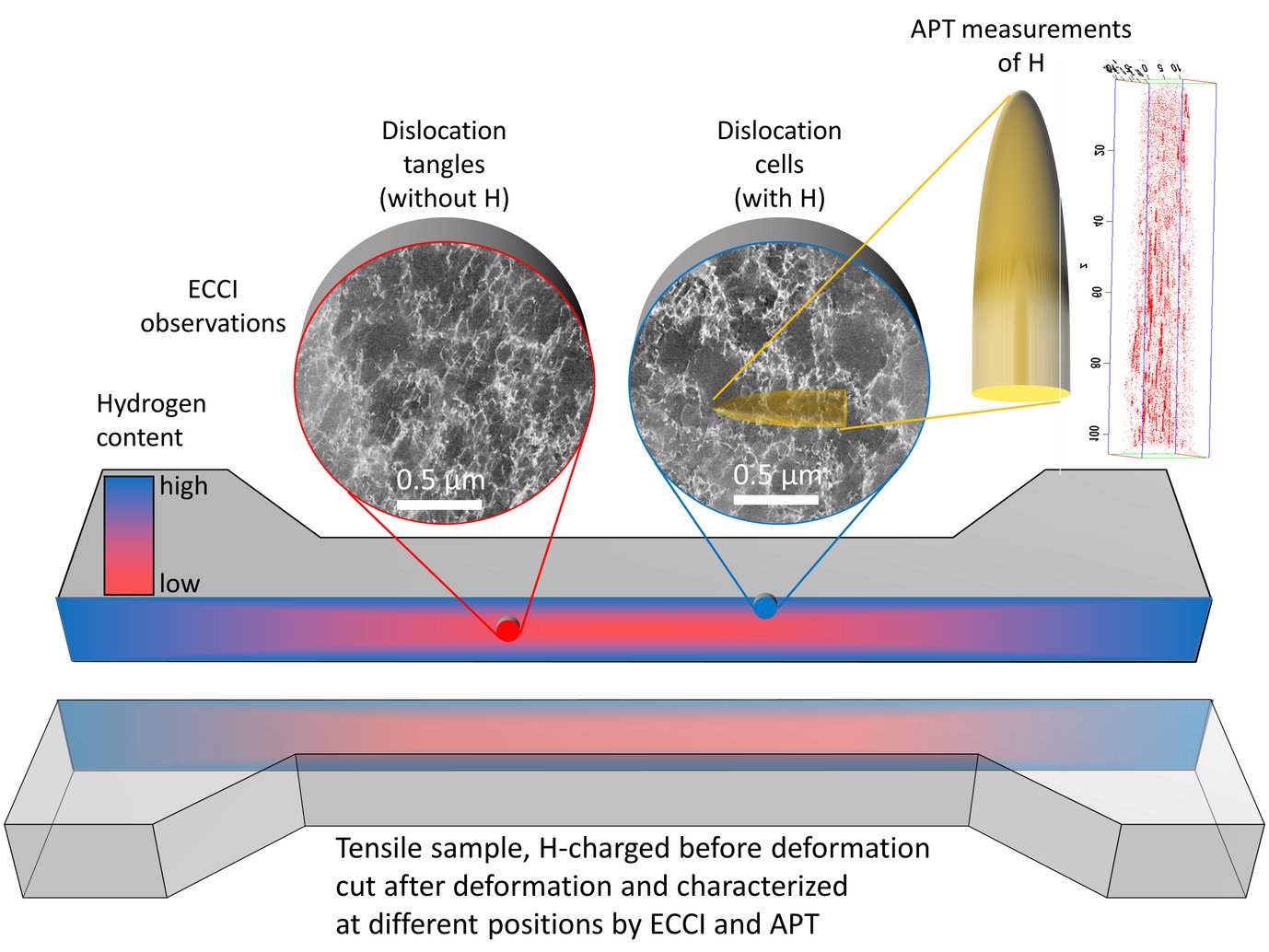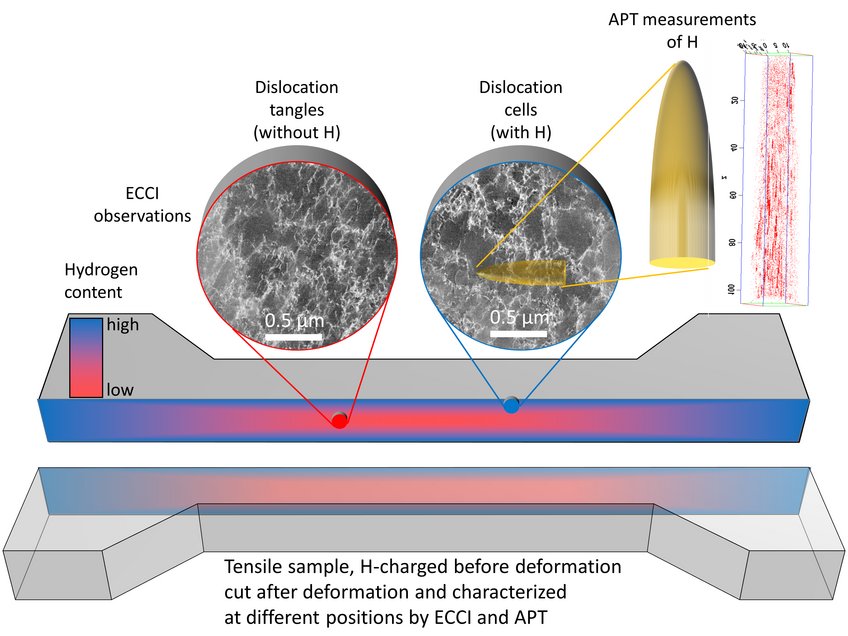Investigation of hydrogen embrittlement in high Mn steels using multiscale approach
High-Mn steels are next generation alloys for highly demanding load bearing applications with potentially high benefit for automotive and structural parts, thus their hydrogen embrittlement susceptibility is a topic of high relevance [1]. Several mechanisms have been proposed to cause hydrogen embrittlement such as hydrogen enhanced localized plasticity, hydrogen induced decohesion, stress induced hydride formation, enhanced hydrogen-stabilized vacancy formation and promotion of intergranular cleavage etc. [2] but the actual prevalent internal damaging mechanism(s) for different hydrogen loading scenarios responsible for macroscopy hydrogen embrittlement is not consensual in the scientific community. We work on understanding the underlying mechanism of hydrogen embrittlement susceptibility in a Fe 28Mn 0.3C (Wt.%) alloy on the micro and nano scale. We explore different hydrogen charging routes, for instance cathodic charging, gas charging and plasma charging [3]. We study the influence of hydrogen charging on microstructure evolution during tensile testing.The defect behavior (dislocation density and arrangement, stacking faults, twins, ε-martensite)is investigated usingquasi in-situ deformation experiments coupledwithelectronchanneling contrast imaging (ECCI) techniquein both charged and uncharged conditions. It has been reported that hydrogen assists the formation of ε-martensite whose impingement on grain boundaries leads to high local stress concentration [4].We aim to determine these stresses by a micro ring core milling techniquein the scanning electron microscope. In order to investigate the role of grain boundariesand stacking faultsas hydrogen trapping sites, we also perform site-specific atom probe tomography (APT) studies [5,6] after charging the samples with hydrogen/deuterium.

